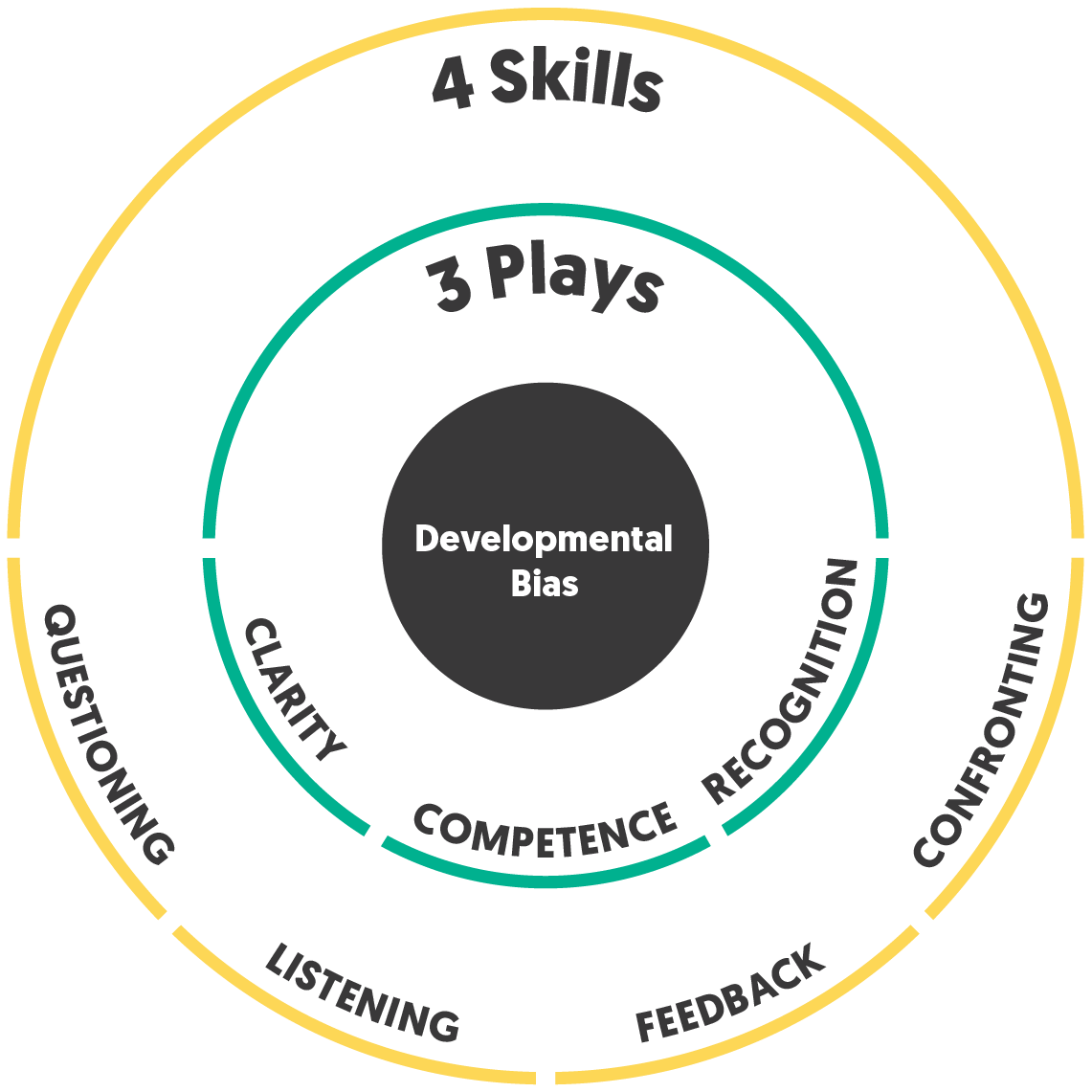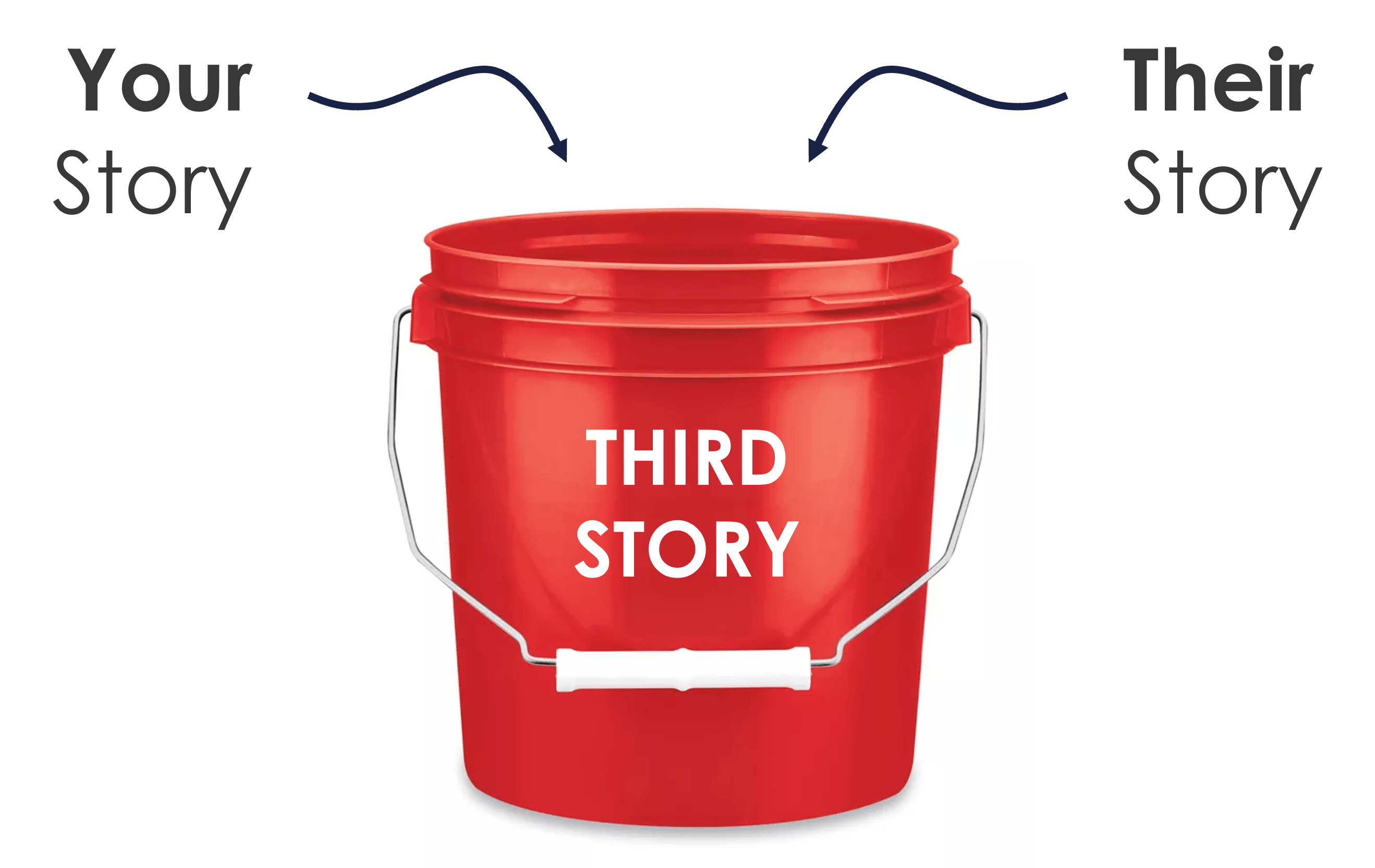It’s 2:15 pm, and a calendar notification pops up: “Check-in with Leo.” My heart immediately starts to beat faster. Leo is one of my top performers. He delivers great results and is seen as a future leader in the organization. But there’s a problem: Leo has a habit of shutting down his peers in meetings – dismissing ideas he thinks are weak and pushing back aggressively when challenged.
I’ve tried to address the issue, but it always goes sideways – tempers flare, and we both leave frustrated without resolving anything. I’ve been walking on eggshells for the past two weeks, but I can’t avoid this conversation any longer. Am I even capable of getting through to him? What if I lose my cool in the process? Will he still respect me afterwards? It’s 2:30 pm. Time to brace for impact.
Confronting is a Coaching Conversation
Confronting is a coaching conversation. It doesn’t fit neatly with the popular notion that coaching is just about asking good questions, but watching Olympic coaches operate, as we have for 30 years, makes one thing very clear: having the courage to have a direct conversation when needed is vital to helping someone reach their highest potential. In fact, avoiding a difficult conversation about something that’s preventing a person’s success is the opposite of good coaching.
That’s why confronting is one of the four core communication skills in our 3×4 Coaching model, and one that builds on the other three communication skills – questioning, listening, and feedback. It’s not the first or most frequent approach that coaches reach for, but it’s an important part of the overall coaching skill set. Knowing that you can navigate complex, high-stakes conversations is part of what underpins your confidence as a leader.

Choose Your Challenge
Having a confronting conversation with Leo is going to be challenging because I don’t want to damage our relationship. It doesn’t take tremendous courage to call up the airline after my flight was delayed and demand a refund because I only care about getting compensated, not my relationship with the customer service representative. But Leo is one of the strongest performers on my team and I want to have a good relationship after this conversation.
It’s also going to be challenging because Leo has been resisting making this change and now it’s getting in the way of his success. This isn’t just a straightforward piece of feedback anymore. There are real stakes. If Leo’s behaviour continues, we could end up in the realm of more formal performance management channels.
“When done effectively, these conversations can resolve the issue at hand, build the other person’s commitment to making progress, and strengthen the relationship.”
It’s easy to see the threats in these conversations but there are also potential benefits. When done effectively, these conversations can resolve the issue at hand, build the other person’s commitment to making progress, and strengthen the relationship if they see you as someone who holds them to a high standard yet cares about them and respects them.
So, I choose my challenge: I can avoid the conversation and deal with the fallout – Leo’s behaviour continues, our relationship becomes strained as my frustration seeps out, and I lose credibility with other people who see me allowing this behaviour to continue.
Or I can face the discomfort of addressing the issue head-on and put my coaching skills to the test.
Connection Before Correction
Once I decide to address the issue, how do I have this conversation in a way that not only protects our relationship but gets Leo committed to making a change? It starts before I even enter the conversation.
Often, we fall into the trap of thinking that we need to emotionally distance ourselves from the other person in order to be “tough” or objective. But it’s our relationship with the other person that’s the foundation for coaching them. I cannot coach Leo if I lose my connection to him.
So rather than distancing myself, I start by strengthening my connection to Leo. I put myself in his shoes and explore the most generous, plausible story I can come up with for why he might be acting this way. Maybe he’s under a lot of pressure that is leaving him with little patience. Maybe I’m not aware of some underlying tension with his teammates. Or maybe Leo is so enthusiastic about his ideas that he doesn’t realize he’s shutting down other people. I choose the story that most strengthens my connection to Leo because it puts me in a mindset to engage in this conversation in a direct but caring way.
I also need to get clear on the specific change I want to see – not all the ripple effects of Leo’s dismissive behaviour, or the fact that I’m also irritated because he was late for our team meeting yesterday – but the specific gap between what I need to see from him and what I’m currently getting.
Open Strong
Next, I need to prepare my opening statement. This will set the tone and direction for the conversation. Without carefully crafting and practicing my opening, things can go sideways quickly.
I could fall into the trap of starting with a sneak attack, “Well Leo, I guess you know why we’re having this conversation…”
Or I might unleash my pent-up frustration and anger, leaving Leo like a deer in the headlights trying to respond.
Or I might revert to the classic “feedback sandwich”, muddying my message and leaving Leo guessing at what I really mean.
An effective opening is short – less than 60 seconds – and clearly articulates the specific behaviour that needs to change, the impact of that behaviour, what’s at stake if it doesn’t change, and my desire to work together to reach a resolution.
“Leo, I want to talk to you about a pattern of dismissing input from your peers. For example, in yesterday’s meeting, Sarah raised a concern about the project timeline. You interrupted and said, ‘That’s not really an issue.’ I felt worried that you dismissed her question because I’ve noticed people hesitating to speak up in front of you. This can affect your ability to get the information needed to make good decisions and manage the concerns of staff. Advancing in this organization depends on your ability to build relationships and collaborate effectively. I haven’t been entirely clear on the importance of this, and that’s on me. I want to find a way to modify this behaviour. What are your thoughts?”
Drop Your Agenda
After delivering my opening, it would be great if Leo said, “got it boss, no problem.” But that’s not what typically happens. I’m likely to get resistance – anger, excuses, deflection, or awkward silence.
Counter-intuitively, that resistance is not something to fight against or try to “objection handle”; instead, I need to recognize that the path to a solution is through the resistance. So instead of defending my position, I drop my agenda and lean in to explore the resistance I’m getting from Leo.
Questioning and listening are the critical coaching skills at this stage of the conversation. Questions to deepen and clarify my understanding of his story: Can you say more about that? Could you give me an example? What is significant about that? And active listening to draw the person out and check for understanding: So, what you’re saying is…, Let me see if I have this right…
I stick with asking questions and listening until I can summarize what we call “the third story.” The third story represents all of what is true for me and what is true for Leo. It’s like I have a bucket, and I keep adding things into the bucket. I don’t take anything out and try to solve it yet. I just add things until we’ve collected all of what is true for both of us.

“So, to summarize, I need you to listen to the concerns and questions of your teammates and address them. It’s frustrating for you to have to consider other people’s concerns as you’ve already thought it all through. Further discussion is unnecessary, slows you down, and may interfere with you hitting your numbers. Do I have that right?”
I don’t necessarily have to agree with Leo’s perspective, but I need to get to a place where I understand him, where I can summarize his point of view in a way that he says, “yes, that’s it.” And if that’s not it, then I keep asking questions until we get to the core of the issue. It’s not until we reach that point that we can start problem solving.
It’s this final stage of the conversation that is often more comfortable and familiar – generating options and agreeing on a path forward. It’s best if most of the options come from Leo so that he owns how he wants to move forward but I can offer ideas as well. Together we can agree on a plan and next steps. Be sure to build in support and accountability. “What do you need from me to put this plan into action?” “Let’s schedule time to check-in and see how it’s going.”
Manage Yourself
Now, is it ever that easy? Of course not. While it’s helpful to have a map for these conversations, no matter how prepared we are, it never goes exactly how we expect. People are complicated and will almost always throw a wrench into the conversation that we never saw coming. Or they’ll do something that seems perfectly designed to get under our skin – raise their voice, roll their eyes, or say that one thing that touches our most sensitive nerve
And so, a big part of the discipline of these conversations is having a plan for how we will manage ourselves in the face of the triggers that could knock us off our game.
First, we need to be aware that we’re triggered in the first place. Often, we become our irritation, or our anger. Instead, we need to notice it by tuning into our internal signals – I might notice myself thinking “here we go again with the excuses,” or that my breathing has accelerated, or that I’m starting to feel impatient. These signals are like lights on your car’s dashboard. When the “check engine” light comes on, you don’t smash the dashboard – you check under the hood. The same goes for triggers in tough conversations. Get curious about what the signal is telling you and take corrective action to get yourself back on track before you respond.
If we don’t notice and manage our triggers, all sorts of unintended behaviours appear, and we can become the worst version of ourselves. Things start to escalate, or the other person withdraws, and we get further and further from a resolution.
The Courage to Coach When it Matters Most
Being effective in these conversations requires the very best of us. It takes self-awareness and being a big person. But the 3×4 Coaching model provides everything we need to succeed. We need to enter the conversation with a generous mindset and clarity on our objective. We deliver a clear opening statement to get the conversation off on the right foot and then drop our agenda to explore the other person’s perspective before we jump into problem solving.
It isn’t always comfortable, but the goal of coaching isn’t comfort. It’s about challenging someone to reach their highest potential. It requires the courage to speak up, the patience to wade through the discomfort, and the belief that the people you’re coaching are capable of more.





